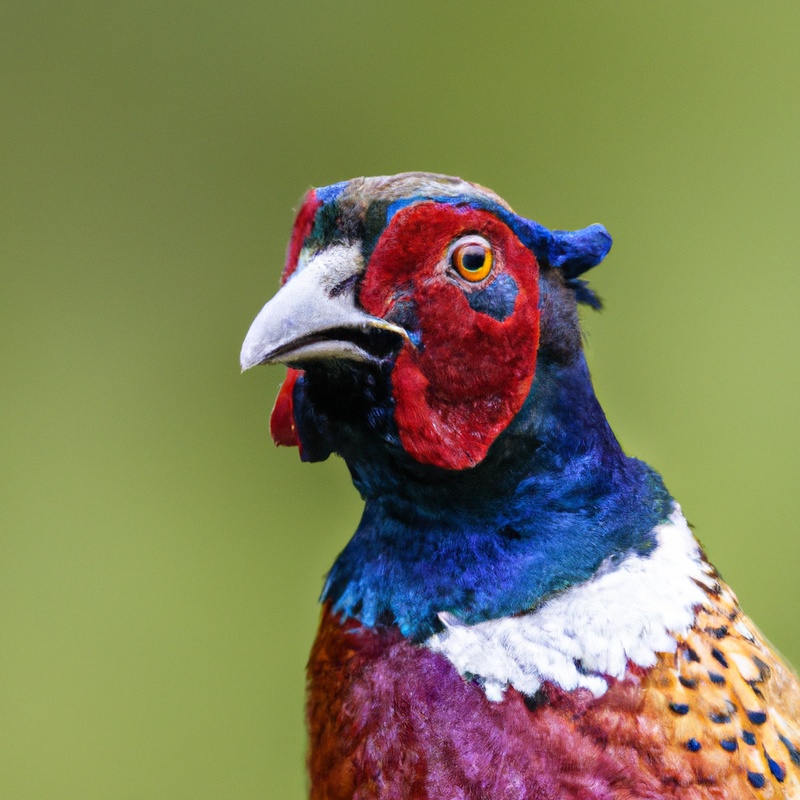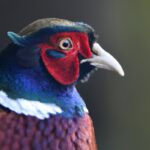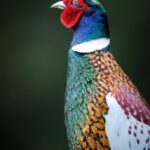Key Takeaways:
- California offers abundant opportunities for hunting ring-necked pheasants.
- Ring-necked pheasants can be found in various habitats throughout California.
- Hunting seasons and regulations for ring-necked pheasants are determined by the California Department of Fish and Wildlife.
- Hunters must obtain the appropriate licenses and tags to legally hunt ring-necked pheasants in California.
Are you ready for an exhilarating hunting experience in the beautiful state of California? Look no further than ring-necked pheasant hunting! As an avid hunter and expert in the field, I’m here to guide you through the ins and outs of this thrilling adventure.
In this article, we’ll cover everything from acquiring the necessary licenses and gear to understanding the behavior of these majestic birds.
We’ll also explore the best hunting locations and techniques for a successful hunt. So, grab your gear and let’s dive into the world of ring-necked pheasant hunting in California!
Aspect | Information |
Location | California |
State Regulations | License required, specific seasons and bag limits apply |
Habitat | Mixed grasslands, agricultural fields, marshes, and riparian areas |
Population | Estimated at around 1 million birds |
Hunting Methods | Upland game hunting with trained dogs, decoys, and shotguns |
Bag Limit | Generally 2-3 birds per day, depending on the region and time of season |
Tips for Hunting | Scout for feeding and roosting areas, hunt early mornings and late afternoons, be patient and stealthy |
Pros | Abundance of pheasants, diverse hunting terrain, challenging sport, delicious table fare |
Cons | License and permit fees, limited hunting seasons, competitive pressure in popular areas |
Preparing for Ring-necked pheasant hunting
Acquiring necessary hunting licenses and permits in California
Acquiring the necessary hunting licenses and permits in California is essential before you head out for a ring-necked pheasant hunt.
To obtain a hunting license, visit the California Department of Fish and Wildlife’s website or a local licensing agent.
You will need to complete a hunter safety course if you haven’t already.
Additionally, make sure to check the specific requirements for pheasant hunting, such as stamps or tags, and adhere to regulations regarding bag limits, shooting hours, and any restrictions.
Stay informed and ensure your hunt is legal and enjoyable.
Choosing the right hunting gear and equipment for Ring-necked pheasant hunting
When it comes to Ring-necked pheasant hunting, choosing the right gear and equipment is essential for a successful and enjoyable experience. Here are some key items you’ll want to consider:
- Shotgun: Opt for a shotgun with a 12 or 20-gauge chamber. This will provide enough power to take down a pheasant without causing excessive damage to the meat.
- Ammunition: Use a shotshell size ranging from 4 to 6, with 2¾ to 3-inch shell length. These sizes offer a good balance between shot spread and effective range.
- Hunting Vest: Invest in a good hunting vest with a game pouch. This will provide ample space for storing extra ammunition, water, snacks, and any bird you’ve successfully bagged.
- Hunting Boots: Choose boots that are comfortable and waterproof. You’ll be spending a lot of time on your feet, so good support and protection from wet conditions are vital.
- Blaze Orange Hat or Vest: It’s crucial to ensure your visibility to other hunters, especially during upland bird hunting where quick and sudden movements are common. A blaze orange hat or vest will make you easily identifiable.
Remember, these are just the basics. Scouting the area, checking local hunting regulations, and investing in quality gear will greatly enhance your pheasant hunting experience.
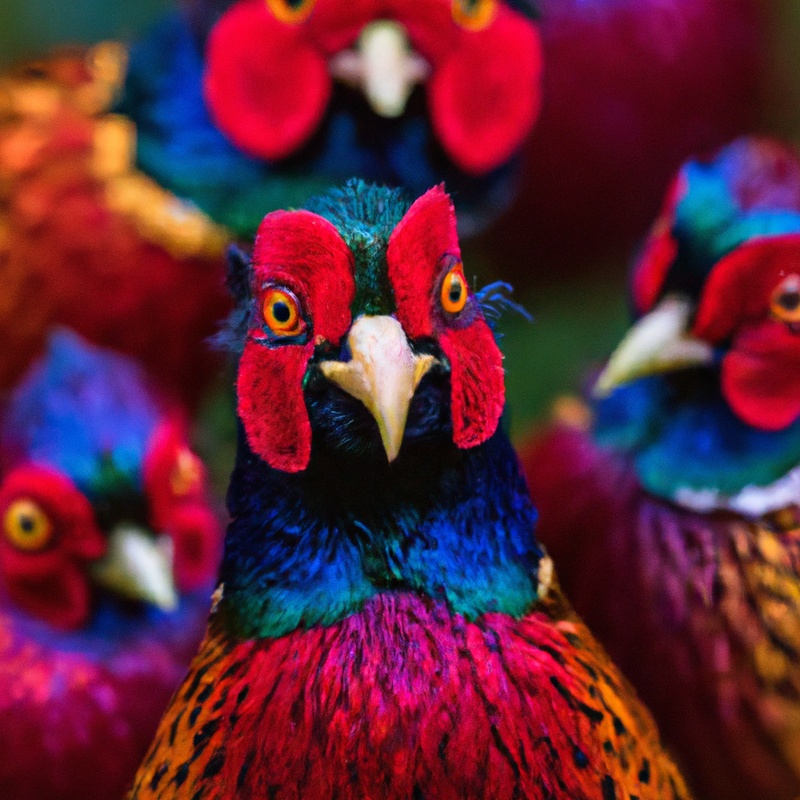
Understanding the behavior and characteristics of Ring-necked pheasants
Ring-necked pheasants are known for their colorful plumage and can be found in fields, grasslands, and agricultural areas.
They have a distinct behavior pattern of running on the ground when frightened, rather than taking flight immediately.
Understanding their behavior can help you become a more effective hunter.
Pheasants are most active during early morning and late afternoon.
They tend to hide in tall grasses and rely on their strong sense of hearing to detect predators.
It’s important to approach quietly and be patient.
Pheasants also have a tendency to flush unpredictably, so be prepared for quick shots.
Hunting dogs can be a valuable asset in locating and flushing out pheasants.
Knowing these behavior traits and characteristics of pheasants will enhance your overall hunting experience.
Where to hunt Ring-necked pheasants in California
Public hunting lands and wildlife areas for Ring-necked pheasant hunting
There are several public hunting lands and wildlife areas in California where you can go for Ring-necked pheasant hunting.
Some popular places include:
- Oroville Wildlife Area: Located in Butte County, this area offers good hunting opportunities for pheasants.
- Mendota Wildlife Area: Situated in Fresno County, this area has a large population of pheasants and is managed specifically for upland game hunting.
- San Jacinto Wildlife Area: Found in Riverside County, this wildlife area is known for its diverse upland game hunting opportunities, including pheasant hunting.
- Colusa National Wildlife Refuge: Located in Colusa County, this refuge allows pheasant hunting on specific days during the season.
- Grizzly Island Wildlife Area: Situated in Solano County, this area provides excellent pheasant hunting opportunities.
- Yolo Bypass Wildlife Area: Found in Yolo County, this wildlife area offers pheasant hunting as part of its upland game hunting program.
Remember to check the regulations, obtain necessary permits, and follow all guidelines when hunting in these areas.
Public hunting lands and wildlife areas are great options for Ring-necked pheasant hunting enthusiasts.
Private hunting clubs and preserves for Ring-necked pheasant hunting
If you’re looking for private hunting clubs and preserves for Ring-necked pheasant hunting in California, you have some great options available. These private establishments provide a controlled environment where you can enjoy the thrill of hunting pheasants.
They often offer well-managed land, experienced guides, and a variety of amenities to enhance your hunting experience.
Some popular private hunting clubs and preserves in California include The Raahauge’s Shooting Sports Complex, The Clear Creek Sports Club, and The Highland Springs Resort. These establishments typically require a membership or daily fee, but they offer a unique and convenient way to pursue your passion for Ring-necked pheasant hunting.
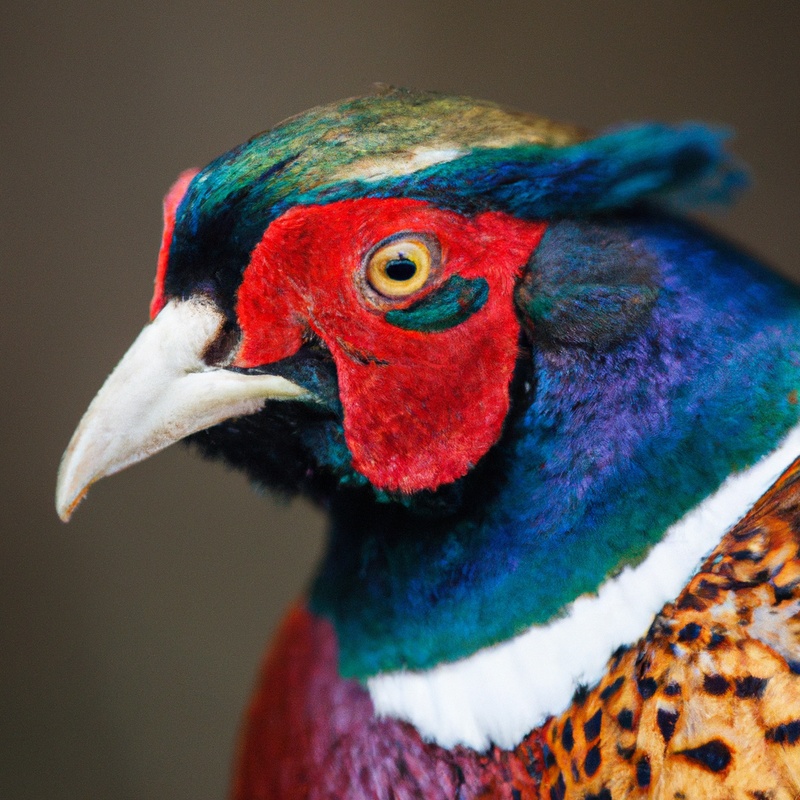
Tips for finding prime hunting locations for Ring-necked pheasants
To find prime hunting locations for Ring-necked pheasants, there are a few tips you can keep in mind.
First, look for areas with diverse habitats, such as fields, grasslands, and brushy areas.
Pheasants need a combination of cover and food sources.
Second, pay attention to areas near water sources, as pheasants will often be found nearby.
Third, talk to local farmers, landowners, or hunting clubs for insider knowledge on where the pheasants are abundant.
Finally, consider hunting in public hunting areas or collaborating with other hunters to increase your chances of success.
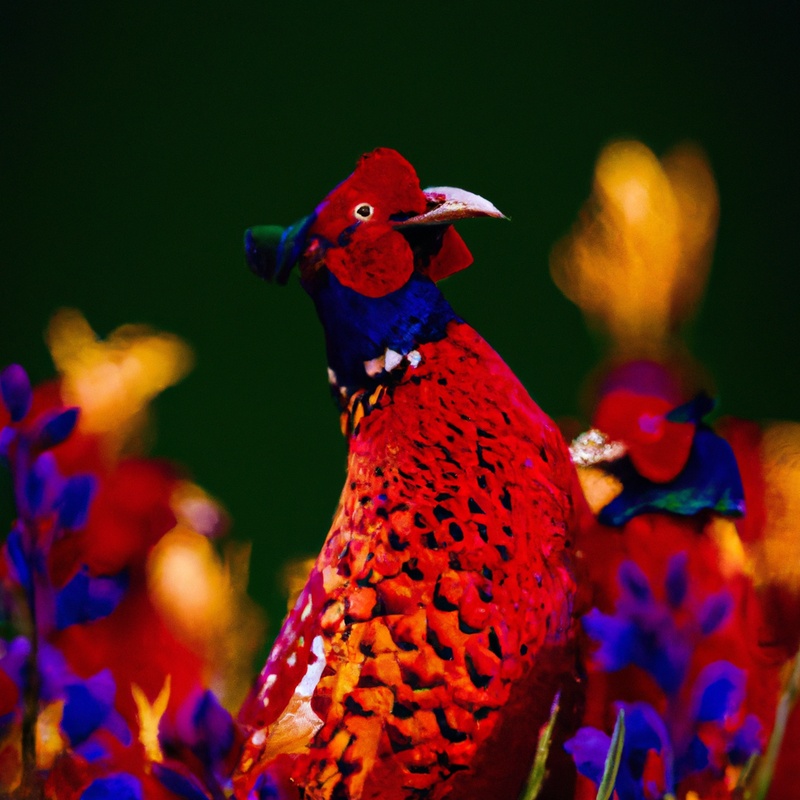
Techniques for Ring-necked pheasant hunting
Scouting and identifying Ring-necked pheasant habitats
To scout and identify Ring-necked pheasant habitats, start by looking for areas with dense vegetation such as grasslands, wetlands, and fields.
These birds prefer areas with a mix of cover, food sources, and water.
Pay attention to agricultural fields, especially those with standing crops like corn or wheat.
Pheasants are also commonly found near brushy areas, fence lines, and hedgerows.
Keep an eye out for signs of pheasant activity such as tracks, droppings, and flushed birds.
Remember to respect private property and obtain the necessary permissions before scouting.
Choosing the right hunting strategy and approach
Choosing the right hunting strategy and approach for Ring-necked pheasants is key to a successful hunting experience. Here are a few tips to consider:
- Scout the area beforehand to identify prime hunting spots, such as fields, grasslands, or wooded areas.
- Use decoys and calls to attract pheasants and increase your chances of a successful hunt.
- Walk slowly and quietly, paying attention to your surroundings. Pheasants are easily spooked, so stealth is essential.
- Consider hunting with a dog trained specifically for bird hunting. A good hunting dog can flush out pheasants and retrieve downed birds.
- Be patient and persistent. Pheasants are known for their evasive behavior, so it may take several attempts before you spot and shoot one.
- Ensure you have the right equipment, including a shotgun with suitable ammunition and the appropriate hunting license.
Effective decoy setup and calling techniques for Ring-necked pheasants
A successful decoy setup for Ring-necked pheasants involves placing the decoys in a natural-looking spread, with a mix of rooster and hen decoys. Position the decoys in an open area where they can be easily seen by passing birds.
As for calling techniques, start with soft clucks and purrs to simulate feeding sounds.
Gradually increase the volume and intensity to imitate an excited rooster. Remember to pause between calling sequences to mimic the natural rhythm of a pheasant’s behavior.
Tips for a successful Ring-necked pheasant hunt
Camouflage and concealment tips for Ring-necked pheasant hunting
When hunting Ring-necked pheasants, camouflage and concealment are key to success.
Here are some tips to help you blend in with your surroundings and increase your chances of a successful hunt:
- Choose the right camouflage pattern: Opt for camouflage clothing that matches the vegetation and landscape in your hunting area. This will help you blend in and remain hidden from the keen eyes of pheasants.
- Use natural cover: Take advantage of natural cover such as bushes, trees, or tall grass to conceal yourself. Position yourself in areas where there are natural barriers between you and the birds, making it harder for them to spot you.
- Stay still and quiet: Pheasants have excellent eyesight and can detect even slight movement. Stay as still as possible and avoid making unnecessary noise that could alert them to your presence.
- Break up your silhouette: Avoid standing out by breaking up your silhouette with the help of natural elements. Use branches, brush, or foliage strategically to create a more irregular shape and blend in with the environment.
- Minimize scent: Pheasants have a strong sense of smell, so it’s important to minimize your scent. Use scent-free soap, avoid smoking, and take care to store your hunting gear in a scent-blocking container.
Tracking and flushing techniques for Ring-necked pheasants
Tracking and flushing techniques are essential for a successful Ring-necked pheasant hunt.
When tracking, focus on areas with thick cover, such as grasslands and cornfields, where pheasants tend to hide.
Look for tracks, feathers, and droppings to determine their presence.
When flushing, approach quietly and slowly to avoid scaring them.
Use a well-trained bird dog to flush the pheasants out of their hiding spots.
Be patient and ready for a quick shot when they take flight.
Practice these techniques to improve your chances of a successful hunt.
Shooting and retrieving techniques for Ring-necked pheasant hunting
When hunting Ring-necked pheasants, it’s important to have proper shooting and retrieving techniques. Here are some tips to help you be more successful:
- Shooting technique:
- Maintain a steady and balanced stance to improve accuracy.
- Focus on leading the target and shooting slightly ahead of the bird’s flight path.
- Take your time and aim carefully before pulling the trigger.
- Be prepared for multiple shots if needed, as pheasants can be tough to bring down.
- Retrieving technique:
- Use a well-trained hunting dog to help locate and retrieve downed birds.
- Train your dog to listen for shot signals and follow hand signals or whistle commands.
- Teach your dog to retrieve gently and avoid damaging the bird.
- Practice retrieving drills with your dog to improve their skills before the hunt.
Handling and processing Ring-necked pheasants
Proper field dressing and processing of harvested Ring-necked pheasants
Proper field dressing and processing of harvested Ring-necked pheasants involves a few key steps to ensure the meat stays fresh and flavorful. First, make sure to remove any feathers and clean the bird thoroughly.
This includes removing the crop, vent, and any internal organs.
After dressing the bird, it’s important to cool it down as quickly as possible to prevent spoilage. You can do this by placing the pheasant in a cooler or refrigerator.
When you’re ready to cook, be sure to marinate or season the meat to enhance its flavor.
Enjoy your deliciously prepared pheasant!
Storage and utilization of Ring-necked pheasant meat
When it comes to storing and utilizing Ring-necked pheasant meat, there are a few key points to keep in mind.
Firstly, it’s important to handle the meat with care to maintain its quality.
After harvesting the pheasant, field dress it as soon as possible and cool it down.
Then, refrigerate or freeze the meat within a few days.
When utilizing the meat, consider different cooking methods such as roasting, grilling, or braising.
Experiment with various recipes and flavors to make the most of this unique game meat.
And remember, always cook it thoroughly to ensure food safety.
Safety and ethical considerations in handling Ring-necked pheasant carcasses
When handling Ring-necked pheasant carcasses, safety and ethical considerations are important to keep in mind.
- Always wear protective gloves to avoid direct contact with the carcass and potential pathogens.
- Dispose of carcasses properly to prevent the spread of disease and minimize environmental impact.
- Adhere to local hunting regulations and respect ethical hunting practices, such as not shooting excessive numbers of pheasants.
- Be mindful of other wildlife that may rely on pheasants for food and avoid disturbing their habitats when handling carcasses.
By prioritizing safety and ethical considerations, you can ensure a responsible approach to handling Ring-necked pheasant carcasses.
Frequently Asked Questions (FAQs) about Ring-necked pheasant hunting in California
Can I hunt Ring-necked pheasants without a hunting license in California?
No, you cannot hunt Ring-necked pheasants without a hunting license in California. A hunting license is required for anyone engaging in hunting activities, including pursuing and taking game birds like pheasants.
It is important to obtain the necessary license to ensure you are legally compliant and to contribute to sustainable wildlife management.
Licenses can be obtained through the California Department of Fish and Wildlife, and they serve as an essential tool for promoting responsible and ethical hunting practices.
What are the legal shooting hours for Ring-necked pheasant hunting in California?
The legal shooting hours for Ring-necked pheasant hunting in California are from sunrise to sunset. During this time, you are allowed to hunt and shoot Ring-necked pheasants as long as you have the appropriate licenses and permits required by the state.
It’s important to note that hunting hours may vary slightly depending on the specific regulations of the California Department of Fish and Wildlife, so it’s always a good idea to check the current regulations before heading out to hunt.
Are there any bag limits and possession limits for Ring-necked pheasants in California?
In California, there are bag limits and possession limits for Ring-necked pheasants.
The California Department of Fish and Wildlife sets these limits to ensure the sustainability of the pheasant population and to promote responsible hunting practices.
Currently, the daily bag limit for Ring-necked pheasants is 2 birds per hunter, and the possession limit is 6 birds.
It’s important to familiarize yourself with these regulations and abide by them when participating in pheasant hunting activities in California.
Remember, these limits are in place to protect the wildlife and maintain a balanced ecosystem.
Can I use a hunting dog for Ring-necked pheasant hunting in California?
Yes, you can use a hunting dog for Ring-necked pheasant hunting in California. Hunting dogs, such as retrievers or pointers, are commonly used to locate and retrieve downed pheasants.
They have a keen sense of smell and can help flush out the birds.
However, it is important to note that there are specific regulations and requirements for using a hunting dog in California, such as obtaining the appropriate licenses and permits. It is also crucial to train and handle your hunting dog responsibly to ensure a successful and ethical hunting experience.
Final Verdict
Hunting Ring-necked pheasants in California can be a thrilling and rewarding experience for both seasoned hunters and beginners. By acquiring the necessary licenses and permits, choosing the right gear and equipment, understanding the behavior of these birds, and knowing where to hunt, you can increase your chances of a successful hunt.
Utilizing effective scouting techniques, employing the right hunting strategy, and mastering decoy setup and calling techniques are key to maximizing your chances of a successful hunt.
Additionally, proper handling and processing of harvested pheasants and adhering to safety and ethical considerations are crucial. With these tips in mind, you can embark on an unforgettable Ring-necked pheasant hunting adventure in California.
